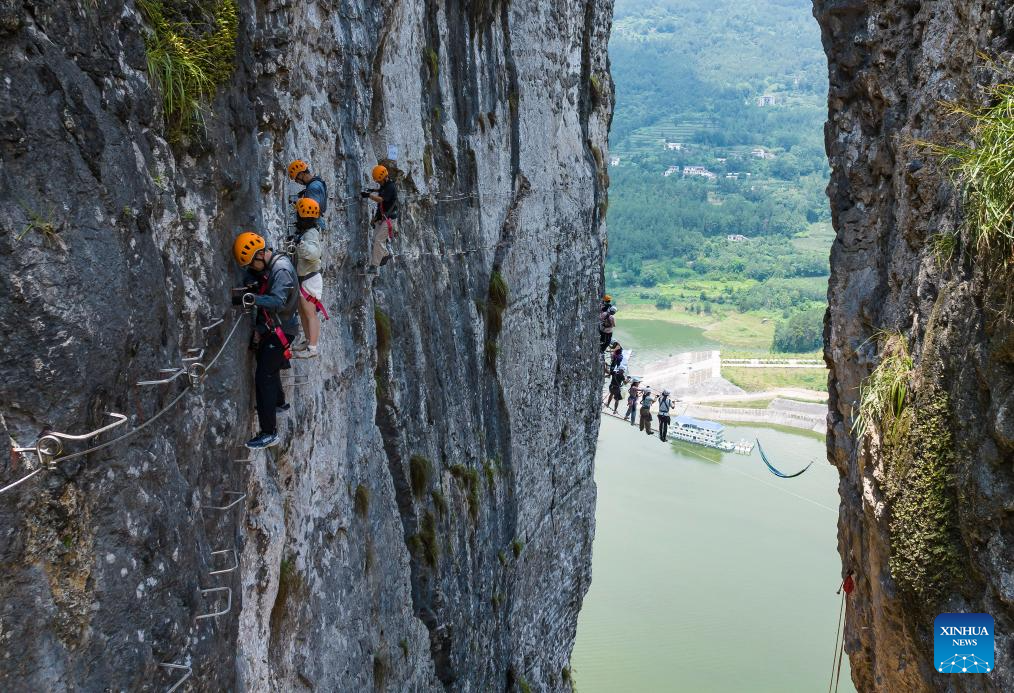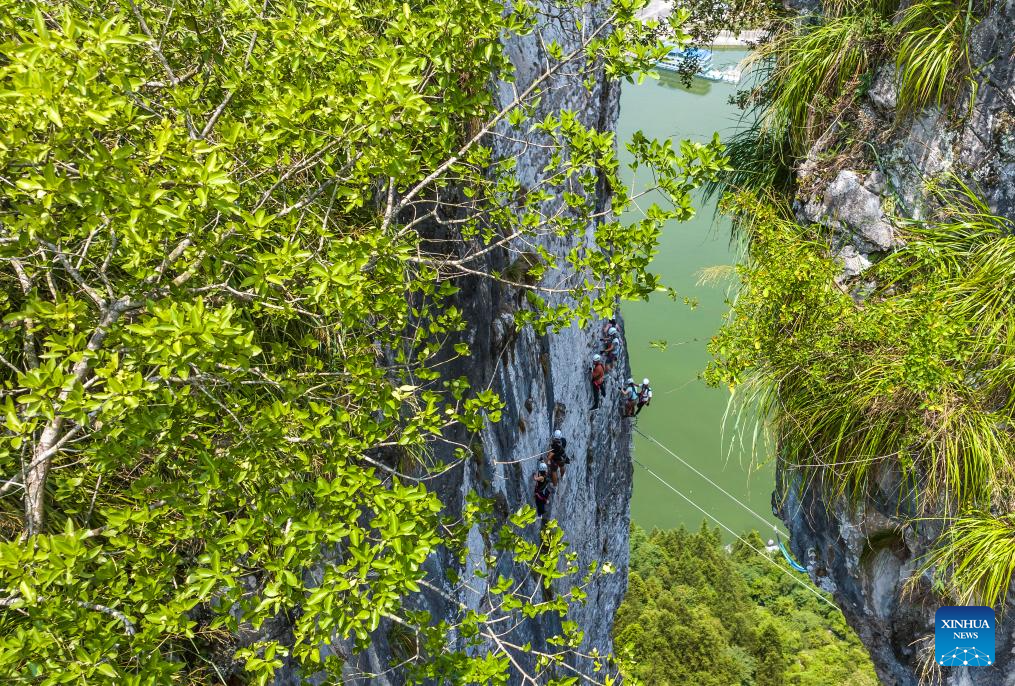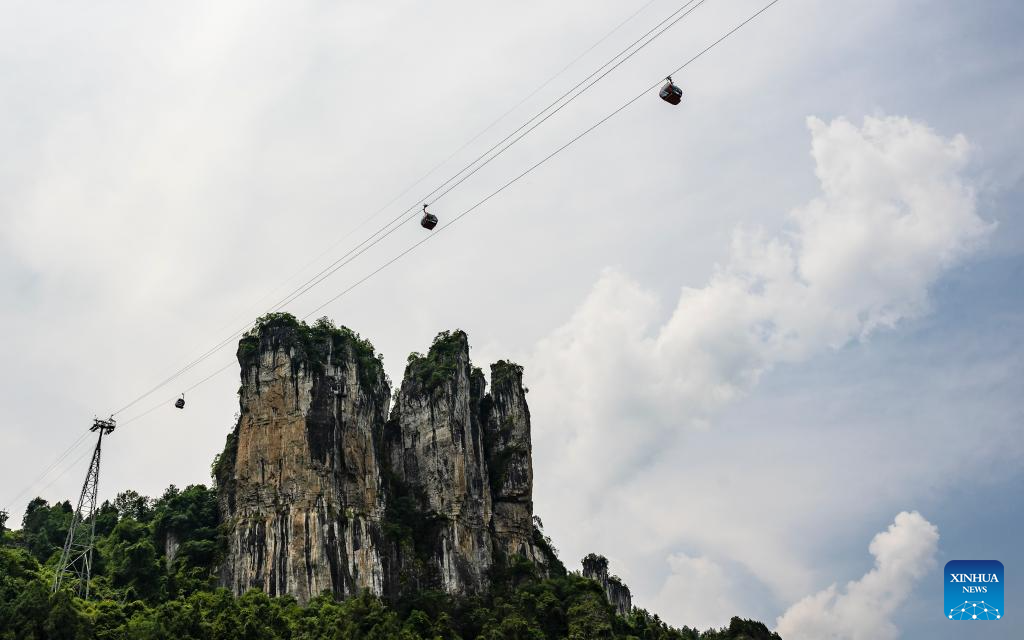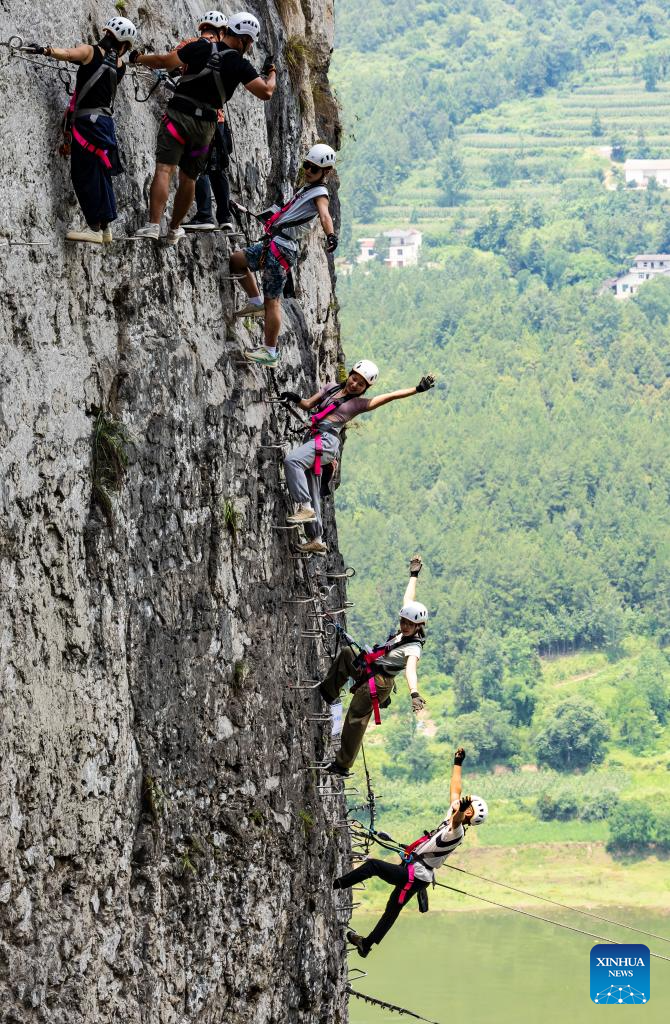Across China: Adventure tourism brings prosperity to mountainous Chinese prefecture
Source: Xinhua
Editor: huaxia
2025-07-22 18:26:45

Tourists experience "via ferrata," a form of assisted climbing along steel cables and footholds anchored into cliff faces, at a scenic area in Enshi Tujia and Miao Autonomous Prefecture, central China's Hubei Province, July 8, 2025. (Photo by Zheng Jiayu/Xinhua)
WUHAN, July 22 (Xinhua) -- In the misty mountains of Enshi in central China's Hubei Province, once-isolated villages are buzzing with activity as adventure tourism turns steep cliffs into ladders of opportunity.
A driving force behind this transformation is "via ferrata," a form of assisted climbing along steel cables and footholds anchored into cliff faces.
"Via ferrata," Italian for "iron way," originated in the European Alps over a century ago and has found a growing number of enthusiasts in China. These thrilling climbing routes are now attracting large numbers of visitors to the dramatic karst landscapes of Enshi Tujia and Miao Autonomous Prefecture.
One popular route winds along the nearly vertical cliffs of Jigongling Mountain in Enshi's Huaping Township. The 2.8-km-long course, with a vertical drop of about 650 meters, opened in 2017 and has since seen rising popularity, attracting more than 30,000 visitors in 2024 alone.
In another scenic area along the Enshi section of the Qingjiang River, a new "via ferrata" course has drawn some 1,000 visitors since its opening in early May. The route is especially popular among young travelers and families, according to the administration of the scenic area.
The growing influx of tourists has created jobs, boosted local incomes and sparked rural development in Enshi, a region once plagued by isolation and poverty. Take Huaping Township, for instance. Perched at an average altitude of 1,200 meters, it was long isolated by poor transport links. Residents relied mainly on low-yield corn and potato farming, forcing most young people to leave in search of work.
Guo Qing, a 29-year-old instructor at the "via ferrata" route in Huaping, leads a team of six local guides. He told Xinhua that some of his colleagues previously worked far from home in eastern China but have since returned and trained as certified climbing coaches.
"Now we're earning a stable income right here at home," he said, noting that monthly earnings typically range between 7,000 and 8,000 yuan (about 975 and 1,115 U.S. dollars), a decent income by local standards.
The adventure tourism boom has also revitalized local services and small businesses. In Huaping, more than 150 jobs have been created in the hospitality and retail sectors.
Xiang Longping, a Huaping farmer, converted his home into a guesthouse shortly after the "via ferrata" route opened. "In the past, we struggled to make ends meet by farming," he said. "Now we host some 3,000 tourists a year and earn over 100,000 yuan annually just from tourism."
To better serve the tourists, he has also taken up cooking, offering local specialties to the guests.
Xiang's success has inspired other villagers to follow suit, with new homestays, restaurants and shops springing up in the township.
Local agriculture is reaping the rewards as well. Liu Xiaolin, a grape grower at the foot of the Jigongling Mountain, said the surge in tourism has significantly boosted sales for the grape growers in the area.
Liu added that since the "via ferrata" adventure route opened, his grape sales have jumped by over 40 percent.
"It was hard to find buyers for our grapes before, but with so many tourists coming for 'via ferrata,' selling them is no longer a problem now," he said. ■

Tourists experience "via ferrata," a form of assisted climbing along steel cables and footholds anchored into cliff faces, at a scenic area in Enshi Tujia and Miao Autonomous Prefecture, central China's Hubei Province, July 8, 2025. (Photo by Zheng Jiayu/Xinhua)

A ropeway is pictured at a scenic area in Enshi Tujia and Miao Autonomous Prefecture, central China's Hubei Province, July 8, 2025. (Photo by Zheng Jiayu/Xinhua)

Tourists experience "via ferrata," a form of assisted climbing along steel cables and footholds anchored into cliff faces, at a scenic area in Enshi Tujia and Miao Autonomous Prefecture, central China's Hubei Province, July 8, 2025. (Photo by Zheng Jiayu/Xinhua)



